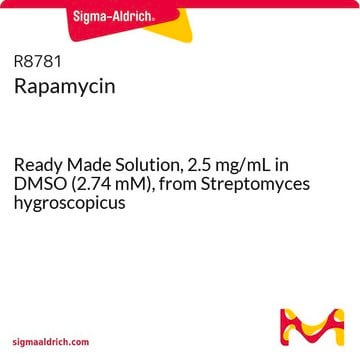SRP0364
mTOR/Raptor/MLST8 human
recombinant, expressed in baculovirus infected Sf9 cells, ≥50% (SDS-PAGE)
About This Item
Prodotti consigliati
Origine biologica
human
Ricombinante
expressed in baculovirus infected Sf9 cells
Saggio
≥50% (SDS-PAGE)
Forma fisica
aqueous solution
PM
137 kDa (mTOR)
150 kDa (Raptor)
37 kDa (MLST8)
Confezionamento
pkg of 10 μg
Produttore/marchio commerciale
Sigma-Aldrich
tecniche
cell based assay: suitable
Solubilità
water: soluble
N° accesso NCBI
applicazioni
life science and biopharma
Condizioni di spedizione
dry ice
Temperatura di conservazione
−70°C
Informazioni sul gene
human ... MLST8(64223) , MTOR(2475) , RPTOR(57521)
Descrizione generale
Applicazioni
Azioni biochim/fisiol
Codice della classe di stoccaggio
10 - Combustible liquids
Classe di pericolosità dell'acqua (WGK)
WGK 3
Punto d’infiammabilità (°F)
Not applicable
Punto d’infiammabilità (°C)
Not applicable
Certificati d'analisi (COA)
Cerca il Certificati d'analisi (COA) digitando il numero di lotto/batch corrispondente. I numeri di lotto o di batch sono stampati sull'etichetta dei prodotti dopo la parola ‘Lotto’ o ‘Batch’.
Possiedi già questo prodotto?
I documenti relativi ai prodotti acquistati recentemente sono disponibili nell’Archivio dei documenti.
Il team dei nostri ricercatori vanta grande esperienza in tutte le aree della ricerca quali Life Science, scienza dei materiali, sintesi chimica, cromatografia, discipline analitiche, ecc..
Contatta l'Assistenza Tecnica.








